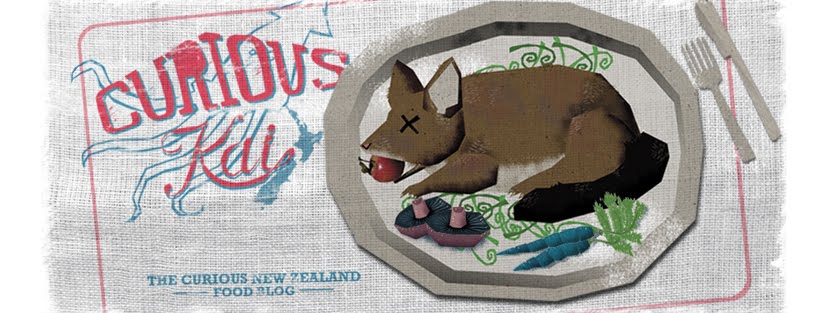It's a bit rough, and certainly not a patch on the real thing but pictured above is my tiny batch (two whole tablespoons!) of homemade smoked paprika!
Smoked paprika has its origins in Spain, where it's called Pimentón. Easily identified by its strong smoky aroma and rich red colour, Pimentón is made by grinding chilli peppers smoked over oak for periods as long as three to four weeks. Its sweet, smoky smell and flavour is an essential ingredient in a raft of dishes in Spanish cuisine, such as paella, and most notably in the making of chorizo. The degree of heat and spiciness is manipulated by the addition (or removal) of the pepper's own seeds to the grind.
I had a bunch of chillis that have spent the better part of eight months drying in my flat near the hot water cylinder - warm, even, consistent heat, out of the sun (which bleaches colour) resulting in dried chillis with a surprisingly rich smell. Turning them into smoked paprika sounded like an interesting experiment, although strictly speaking the method wouldn't be traditional - no matter.
Now, how to process the chilli. I considered hot smoking; it offered the advantage of imparting an additional flavour component, the heat caramelising the chilli's natural sugars, but there was also the risk of scorching. Cold smoking seemed the best option - longer and slower, making it easier to control the process, resulting in a more intensely flavoured product.
Grabbing ten chillis, I split them and removed the ribs and seeds.
On with the heat...
You may already be aware of this, and embarassingly, I've only just discovered it, but subjecting foods to smoke isn't necessarily a good thing, largely because of the carcinogenic effects of its by-products, tar and ash. To try and minimise this (and to be honest I'm not sure how effective it is, not being a scientist), I rigged a filter comprising three layers of muslin which I attached to the duct pipe. Muslin semed most effective in that it permitted smoke to pass through while collecting a sizable amount of what's known in scientific circles as goop - dark, yellowish brown goop. I tried using paper filters (coffee filters and a chemical respirator pre-filter) and also cotton wool; these were too thick and effectively blocked the flow of smoke.
The next day, the chillis looked darker and were rich with the smell of smoke. I cut them into smaller pieces and then fed them into my spice grinder, an old sterilised coffee bean grinder. It took ages to grind, not surprising given their fibrous makeup.
The (nearly) finished product! All that time and effort for two whole precious tablespoons - I swear, anyone suffering a sudden sneezing attack anywhere near my homemade paprika would have been hurled across Napier in anger! The grind is a little coarse so I'll feed it through again, using a finer setting and then sieve the resulting product. The smoky aroma is still prominent so it'll be interesting to see how it stands up to cooking. I might even do a comparison test, cooking the same dish twice and using proper Pimentón in one and the Smoked Papri"kai "© (*cough*) in the other. It's a given that there will be a discernible difference in taste, but that's for another day - tune in next week for the cooking demonstration, dear reader...











I do like smoked paprika - never thought of doing it home-made, sounds like a real labour of love. We'd have to be careful here in Wellington though, after all that effort to make paprika it would be a shame for the wind to blow it all away out an open window...
ReplyDeleteHa ha! Too true :) I don't think I'll be trying this again in a hurry - it was indeed a lot of effort for very little return, but I'm glad I did it. I'm glad you stopped by; I've been reading your blog since the SST article & it's really lovely!
ReplyDeleteHi Nigel ,
ReplyDeleteyes Pimenton is used for paellas this brings really a fine touch to the dish !! cheers for paris Pierre
Thanks Pierre :)
ReplyDelete